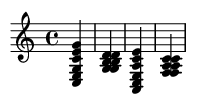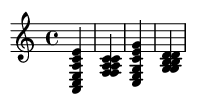Summary:
The I-V-vi-IV progression is arguably the most important chord sequence in modern popular music. It strikes a perfect balance between stability (I), tension (V), melancholy (vi), and uplift (IV). Its cyclical, emotionally resonant nature has made it the harmonic backbone of countless hit songs across genres for over half a century, from rock anthems to pop ballads.
Keywords:
I-V-vi-IV, chord progression, pop music, music theory, songwriting, vi-IV-I-V, contemporary harmony, four chords
Introduction:
If you've ever felt that dozens of pop songs sound strangely familiar, you're not wrong. You've likely noticed the sound of the I-V-vi-IV progression. It has achieved legendary status, earning nicknames like "the pop progression" and "the four chords." Its ubiquity demonstrates how certain harmonic patterns tap into fundamental musical and emotional responses. In this article, we'll break down what makes these four chords so powerful, explore their theoretical underpinnings, and show you how to use them in your own music.
The Anatomy of the Progression: Why It Works
The I-V-vi-IV progression uses four chords built on the first, fifth, sixth, and fourth degrees of a major scale. Its magic lies in the function of each chord and how they relate to one another, creating a complete emotional arc in just four steps.
- I (Tonic): This is the 'home' chord. It provides a sense of stability, resolution, and rest. In the key of C Major, this is the C Major chord (C-E-G).
- V (Dominant): This chord creates maximum tension. The fifth degree of the scale has a powerful magnetic pull back to the tonic. In C Major, this is the G Major chord (G-B-D). The B note, the "leading tone," is only a half-step away from C, making the desire for resolution almost irresistible.
- vi (Submediant): This is the relative minor of the tonic, adding a touch of sadness, reflection, or introspection. In C Major, this is A minor (A-C-E). Moving from V to vi is a "deceptive cadence," as it subverts the expectation of returning to I, creating a moment of emotional depth.
- IV (Subdominant): This chord provides a feeling of lift and gentle movement away from home, but without the strong tension of the V chord. In C Major, this is F Major (F-A-C). It often acts as a pre-dominant chord, setting up the V chord for a powerful return to the tonic.
Examples in C Major
1. The Basic I-V-vi-IV Progression
Here are the four chords in their most fundamental form (C - G - Am - F). Notice the clear, cyclical journey from home (C), to tension (G), to reflection (Am), to lift (F), and back again.

2. The "Sensitive" Rotation: vi-IV-I-V
One of the most common variations is to start the cycle on the vi chord (Am - F - C - G) . This creates a feeling of searching or longing that resolves powerfully at the end of the phrase. It's often called the "sensitive female singer-songwriter" progression, but its epic feel is used everywhere.

3. Adding a Simple Rhythm
Music isn't just block chords. Here is the I-V-vi-IV progression with a simple, syncopated rhythm that you might hear in a pop song. This shows how the progression serves as a foundation for rhythmic creativity.
Practical Applications and Songwriting
This progression is a songwriter's best friend. It appears in countless hit songs, including Journey's "Don't Stop Believin'" (I-V-vi-IV in the chorus) , Adele's "Someone Like You" (uses rotations), U2's "With or Without You" (I-V-vi-IV throughout), and The Beatles' "Let It Be" (I-V-vi-IV in the verse). To start songwriting, loop these four chords and try improvising a melody over the top. The progression provides a fantastic canvas for both simple, catchy hooks and complex vocal lines, supporting melodies in both major and minor modes.
A Brief History of the Four Chords
While ubiquitous today, the progression's roots are deep. Pachelbel's Canon in D (c. 1680) uses the similar I-V-vi-iii-IV-I-IV-V pattern, establishing the powerful I-V-vi root movement that forms the core of the modern progression. In the 1950s, the "doo-wop" progression (I-vi-IV-V), heard in songs like "Stand By Me" by Ben E. King, became a staple of early rock and roll. The Beatles and their contemporaries then cemented the I-V-vi-IV order in the 1960s, and it has remained a dominant force in popular music ever since, from Lady Gaga to Ed Sheeran.
Fun Facts and Advanced Concepts:
The comedy group Axis of Awesome has a famous video medley showcasing dozens of songs using this progression. Musicologists suggest this pattern is found in a significant percentage of all pop songs from the last 50 years. For a different flavor, try it in a minor key. The direct equivalent is i-VI-III-VII (e.g., in A minor: Am-F-C-G). This creates a powerful, epic sound common in film scores and rock anthems, as the chords are borrowed from the relative major key.
Conclusion:
The I-V-vi-IV progression is more than just a sequence of chords; it's a fundamental storytelling device in modern music. It provides a reliable framework of tension and release that resonates deeply with listeners. While its ubiquity can sometimes lead to cliché, true artistry lies in what a songwriter builds on top of this solid foundation—the melody, the rhythm, the lyrics, and the instrumentation. The four-chord song isn't an endpoint; it's a starting point for infinite creativity.
References:
Everett, W. (2009). The Foundations of Rock: From "Blue Suede Shoes" to "Suite: Judy Blue Eyes". Oxford University Press.
Moore, A.F. (2012). Song Means: Analysing and Interpreting Recorded Popular Song. Ashgate.
Temperley, D. (2018). The Musical Language of Rock. Oxford University Press.
